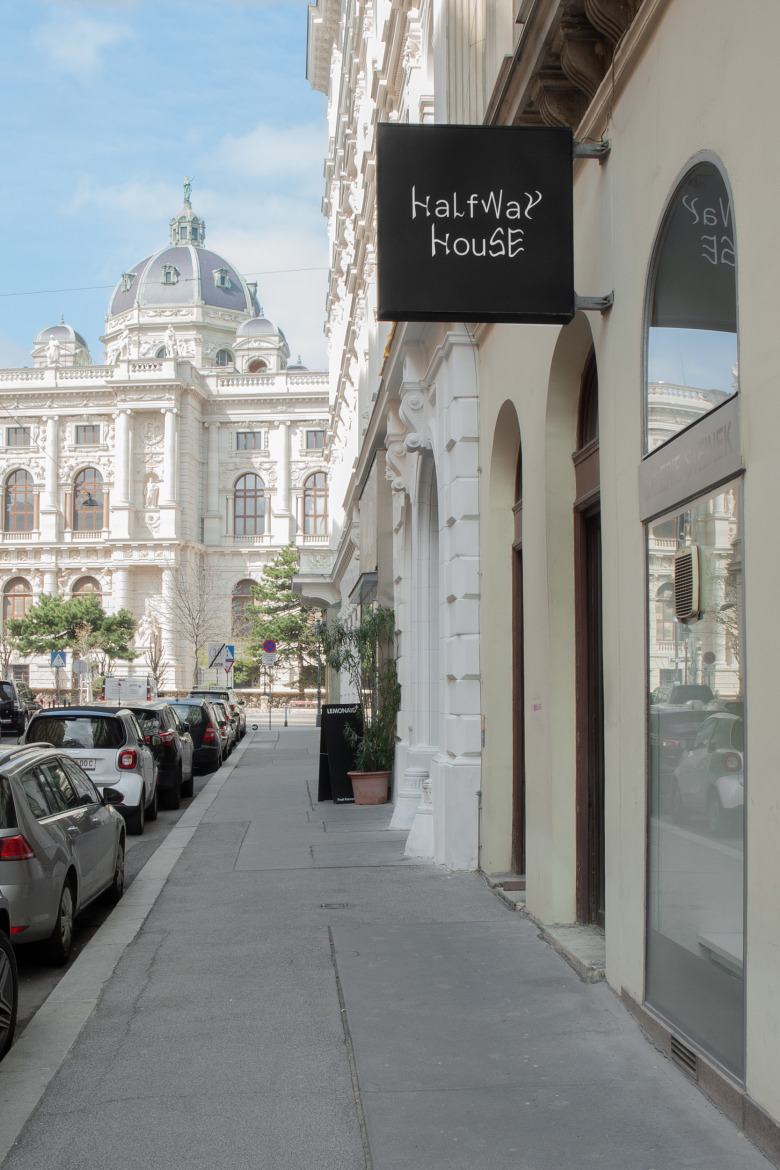
Halfway House, 2019, Installation view, EXILE
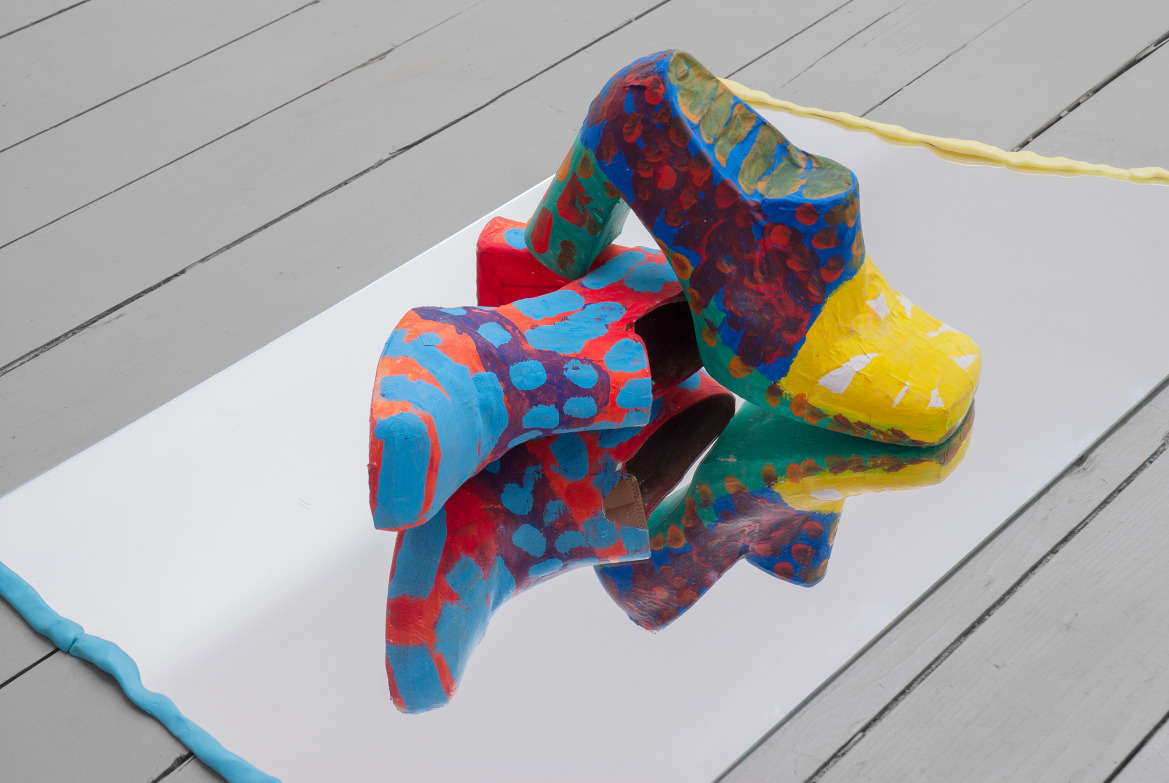
Artist unknown, Untitled, undated, shoes, papier mâché, acrylic, 35 x 25 x 20cm
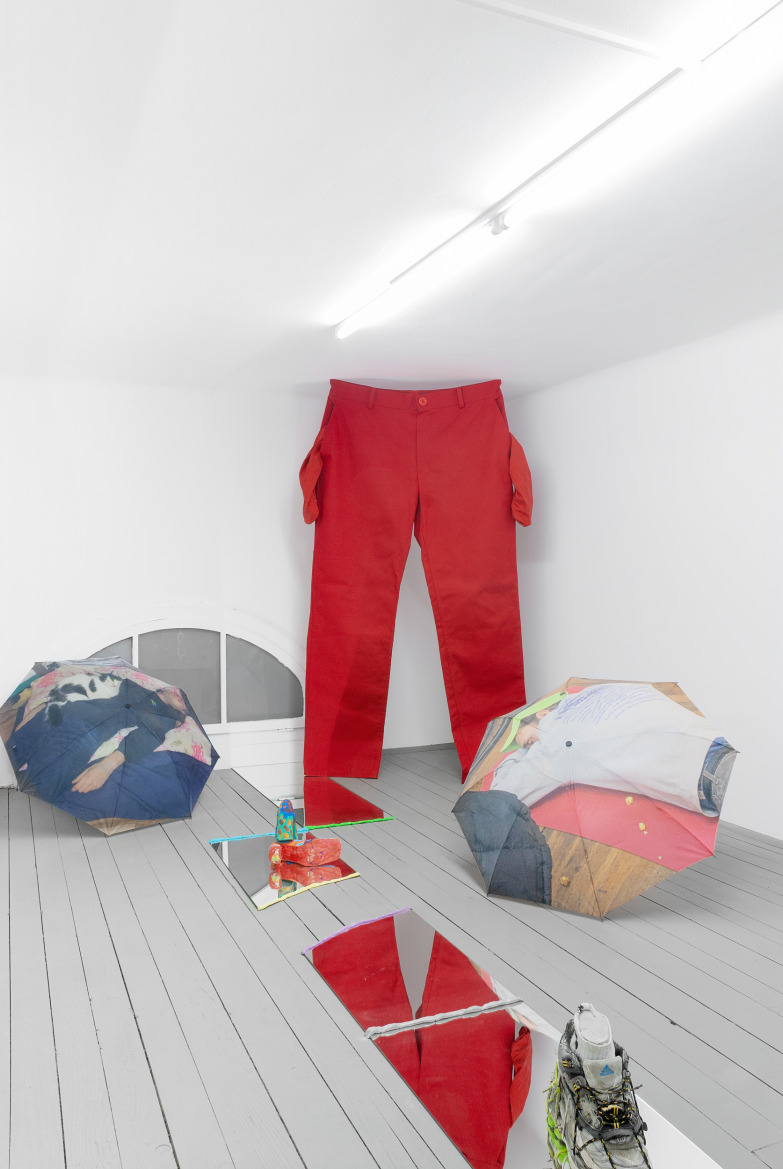
Halfway House, 2019, Installation view, EXILE
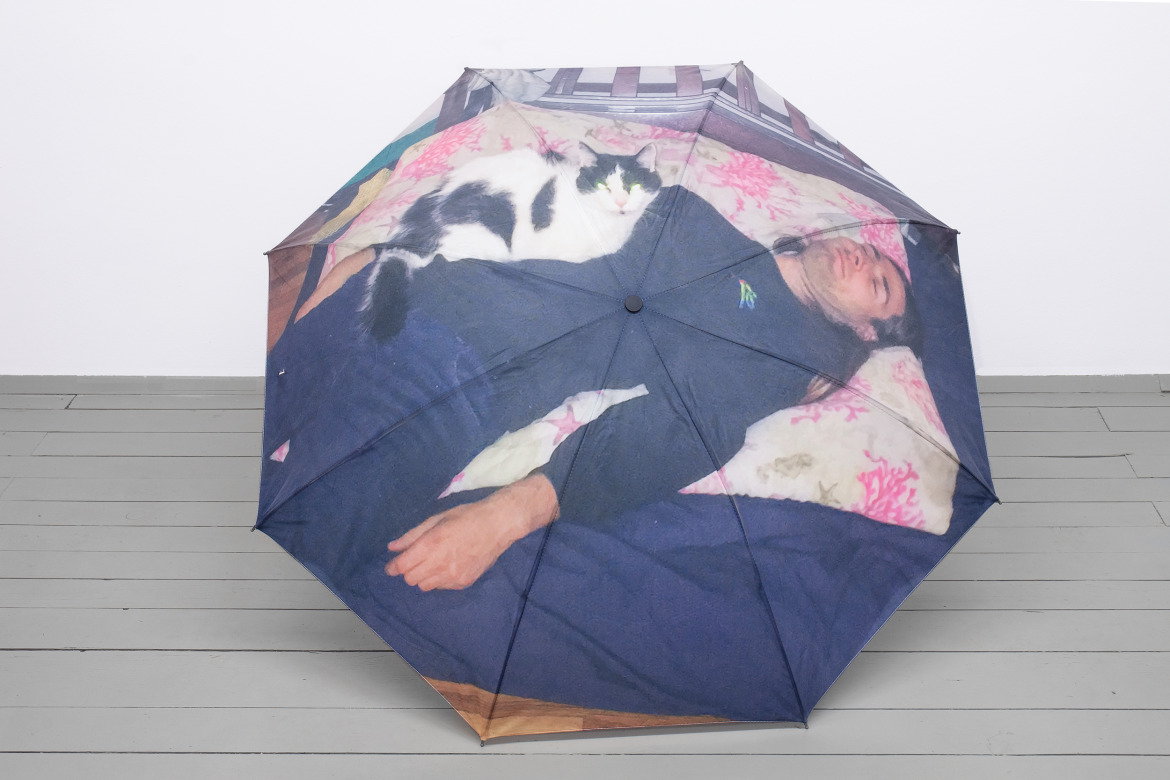
Paul Barsch & Tilman Hornig, Immer Müde Und Scheiss Wetter in New York, 2019, custom printed umbrella, 100 x 100 x 50 cm
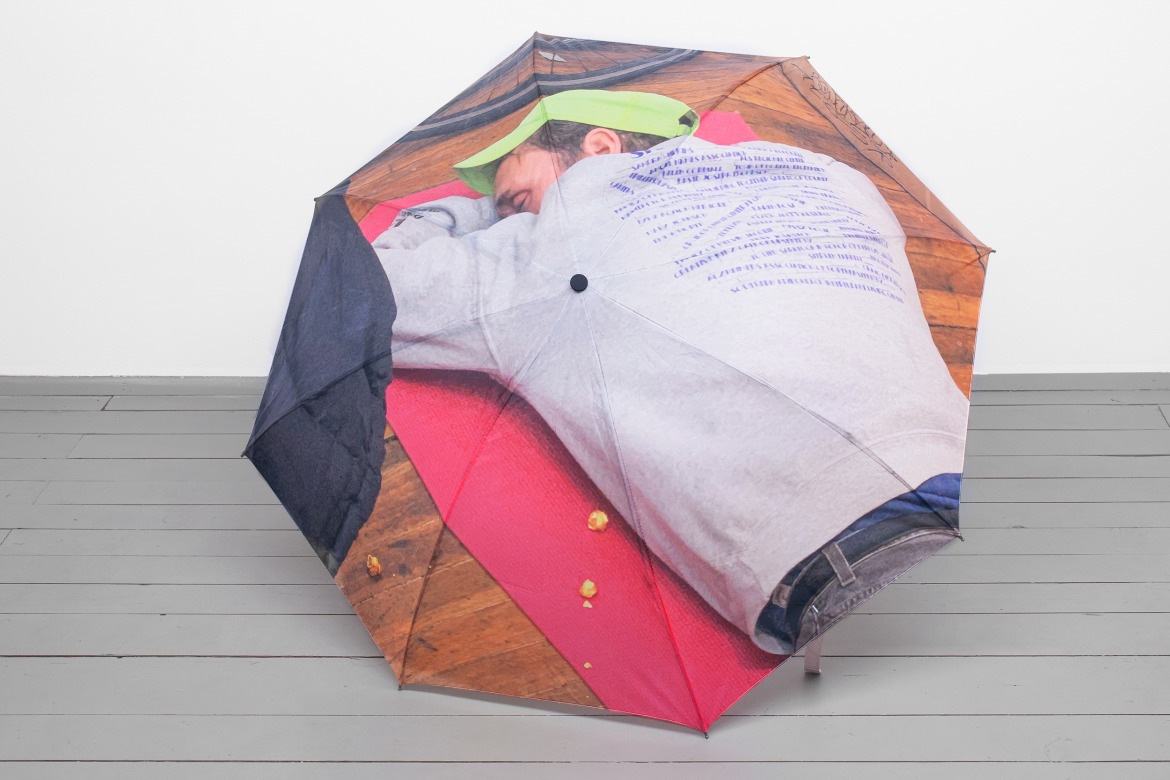
Tilman Hornig & Paul Barsch, Immer Müde Und Scheiss Wetter in New York, 2019, custom printed umbrella, 100 x 100 x 50 cm
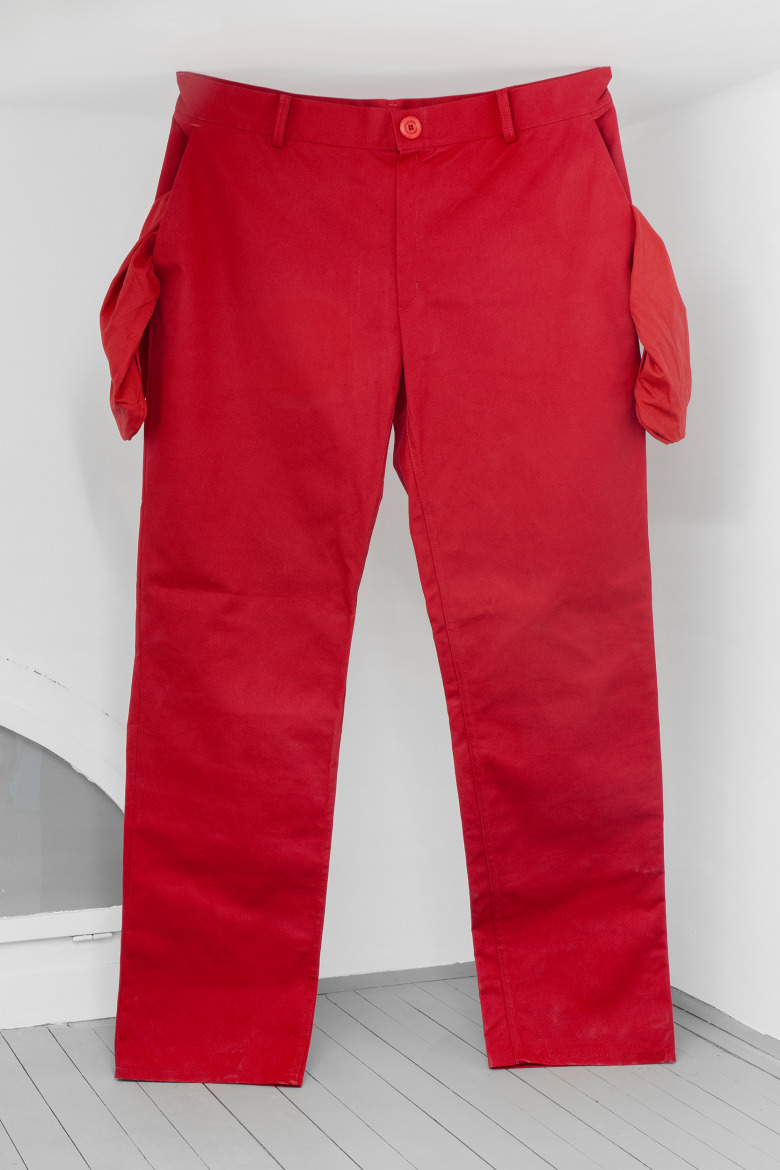
Amanda Ross-Ho, Untitled Vestment (HAVE NOT / SECOND HAND), 2017, red canvas, thread, button, 200 x 90 x 5 cm
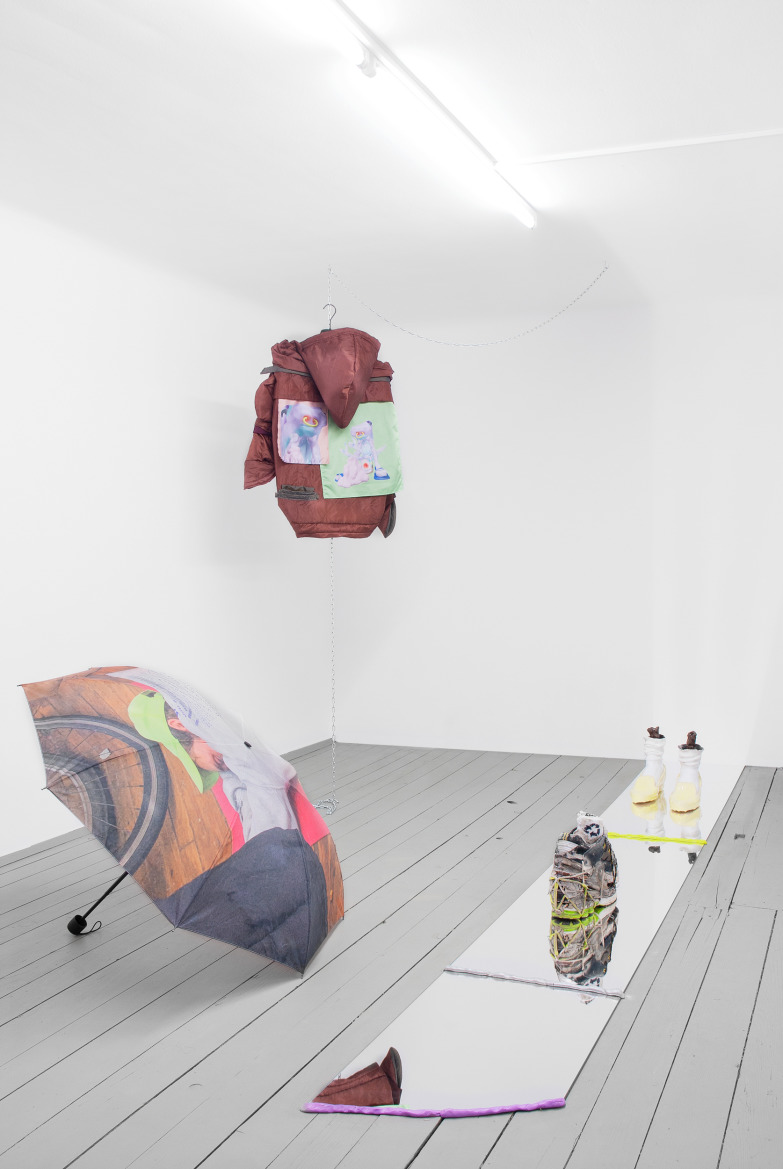
Martins Kohout, Halfway House, 2019, Installation view, EXILE

Martins Kohout, Then you are welcome, cozy brown, 2019, various fabrics, prints on artificial silk, 80 x 60 x 30 cm
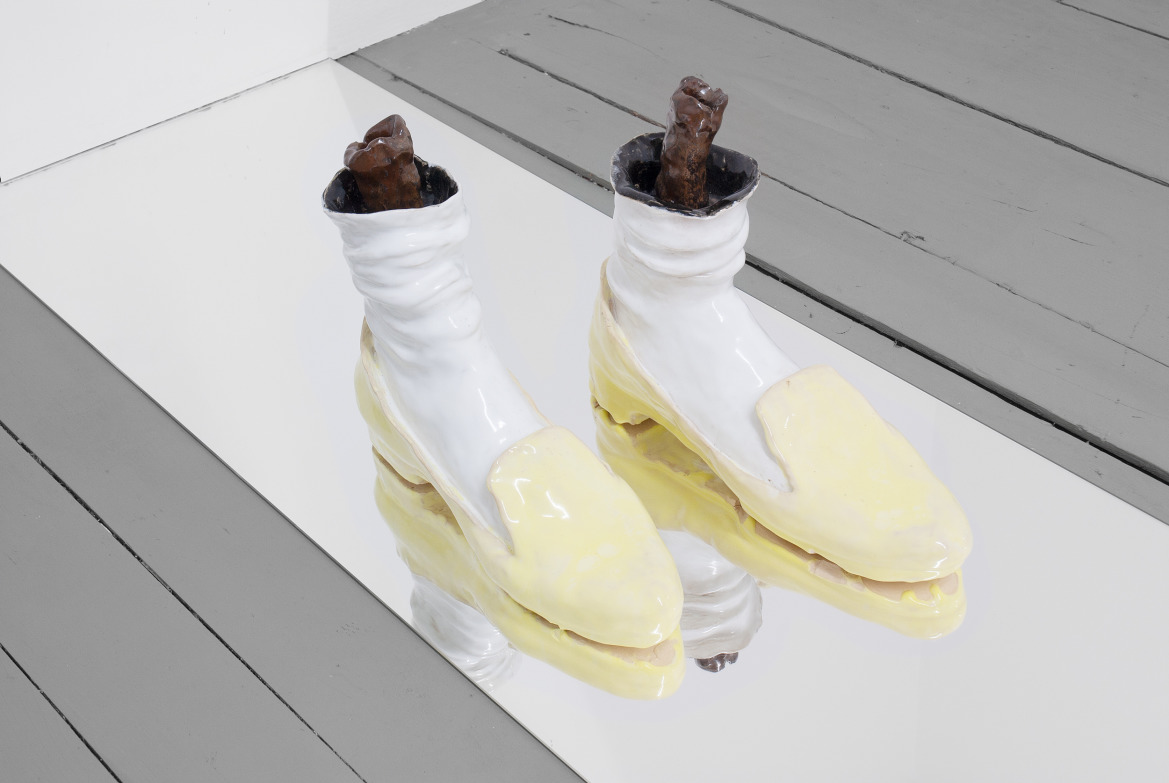
Nschotschi Haslinger, Loafers Aristo , 2017, glazed ceramics, 30 x 25 x 25 cm
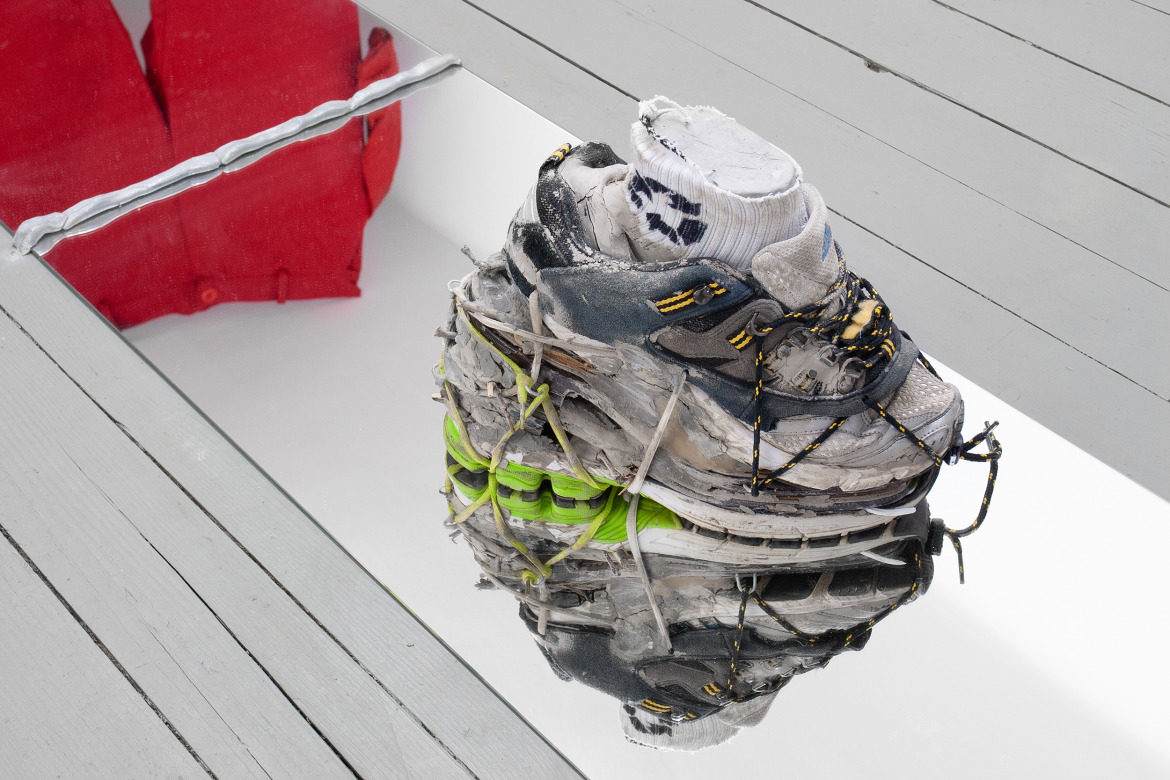
Tenant of Culture, Works and Days (series), 2019, recycled shoes, clay, cement, twigs, recycled socks, permanent marker,
40 x 12 x 25 cm

Halfway House, 2019, Installation view, EXILE

Diana Barbosa Gil,
Daphnis (detail), 2019, clay, ink, polish, latex milk, leather, 45 x 15 x 20 cm
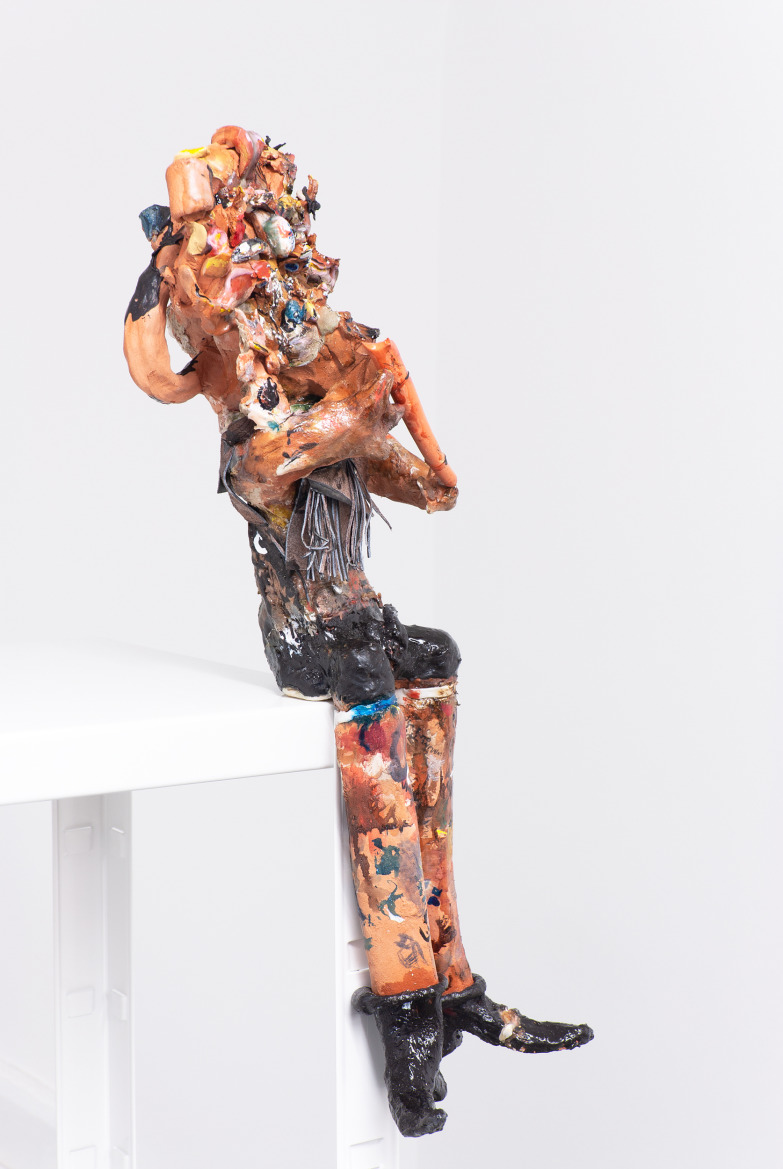
Diana Barbosa Gil,
Daphnis, 2019, clay, ink, polish, latex milk, leather, 45 x 15 x 20 cm
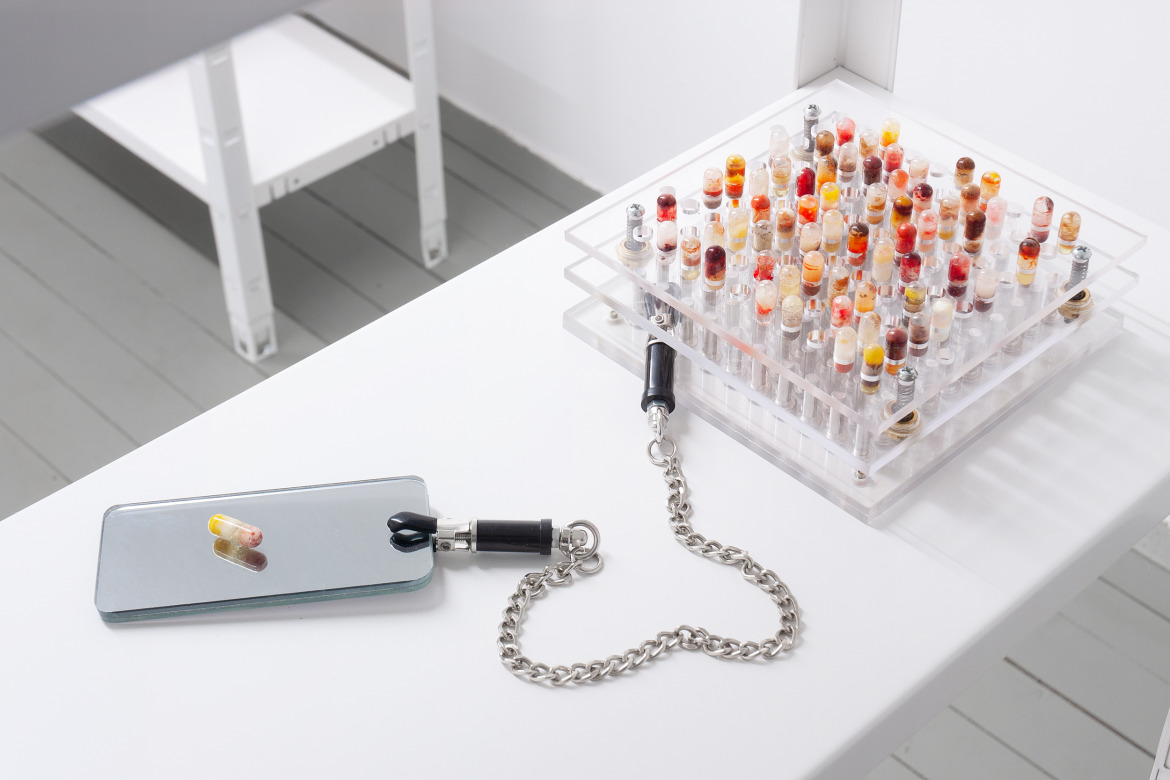
Fette Sans, Radicalize Contemplation(EV19-00 Display), 2019,
64 unique filled capsules, nipple clamp chain, glass, capsule machine CN-100, dimensions variable

Rafal Zajko, Protector I (right), 2019, plaster casting, enamel, 30 x 9 x 8 cm
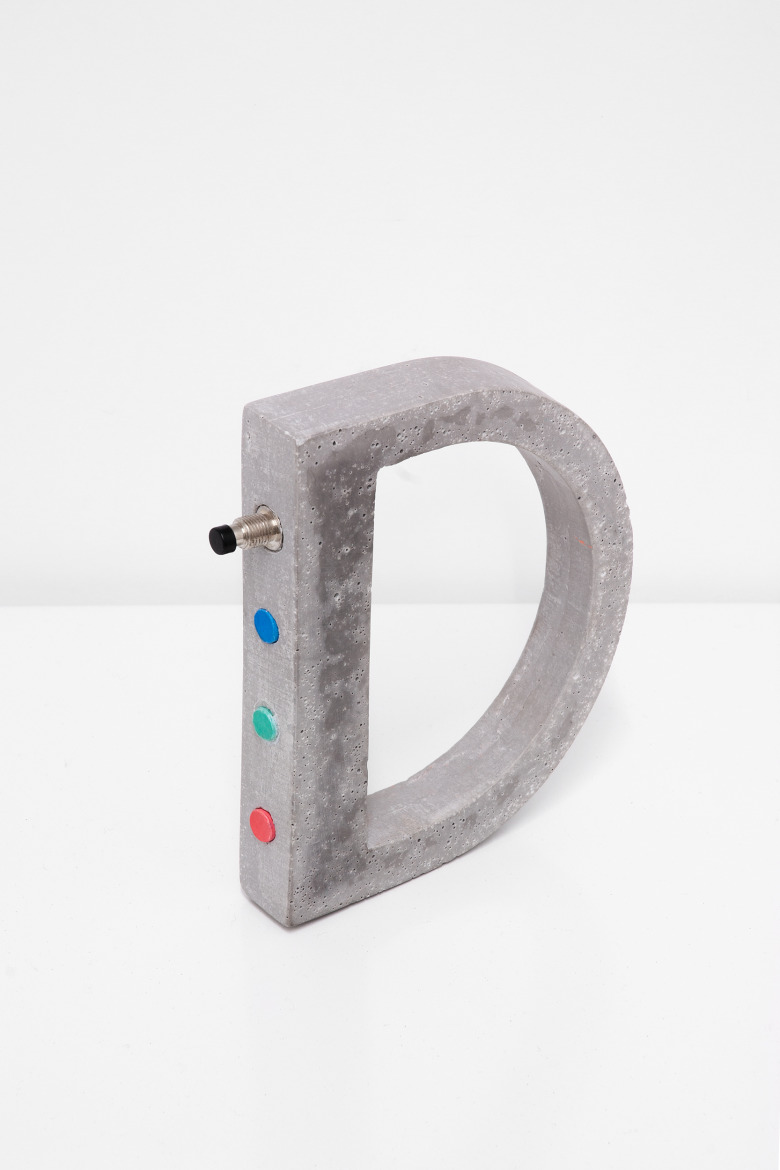
Rafal Zajko, Brutalist Bangle (large D), 2017, jesmonite, push button, 13 x 10 x 2 cm
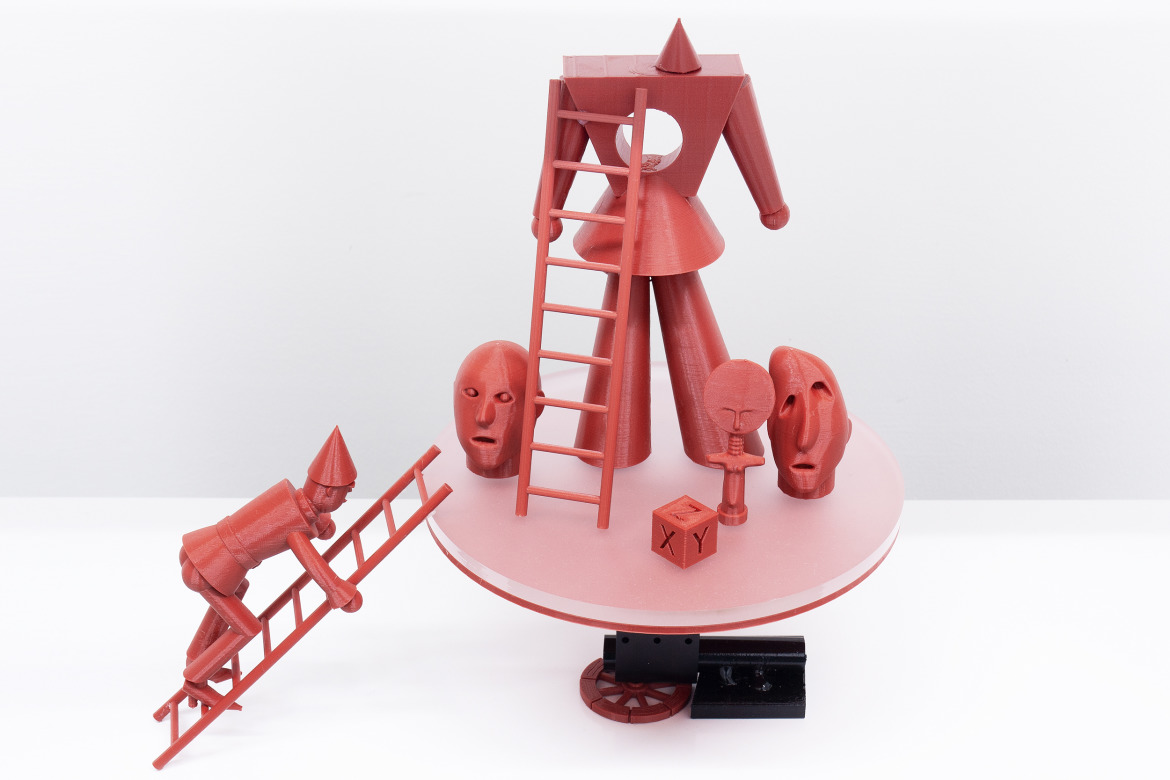
Wieland Schönfelder, Skulptur als Geist und Maschine, 2019,
3D print, steel, aluminum, acrylic glass, 33 x 35 x 25 cm

Wieland Schönfelder, Das lecke Weinfass, 2019 (upper shelf),
3D print, steel, aluminum, acrylic glass, diamond confetti, 55 x 60 x 25cm. Skulptur als Geist und Maschine, 2019 (lower shelf), 3D print, steel, aluminum, acrylic glass, 33 x 35 x 25 cm

Halfway House, 2019, Installation view, EXILE
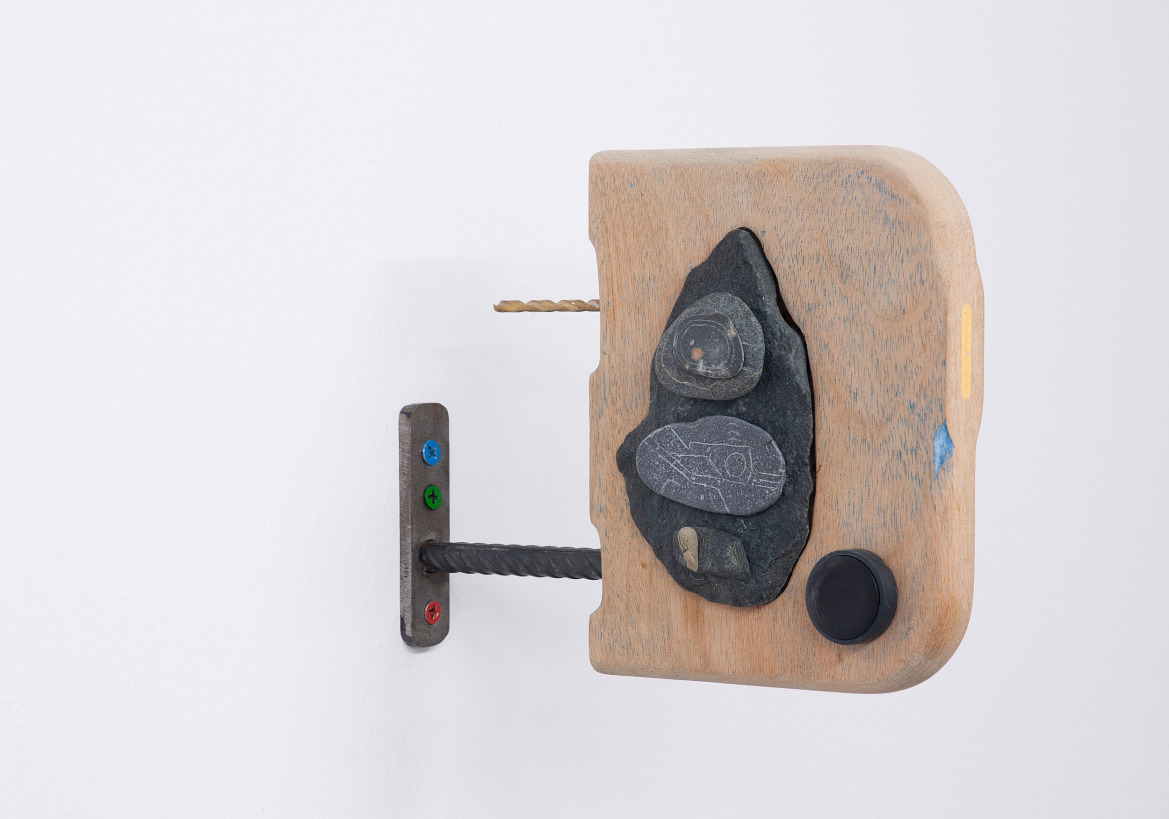
Rafal Zajko, Chordata I, 2018, steel, wood, dye, jesmonite, pebbles, sea glass, sea plastic, sanding paper, drill-bit, push button, 17 x 21 x 3 cm
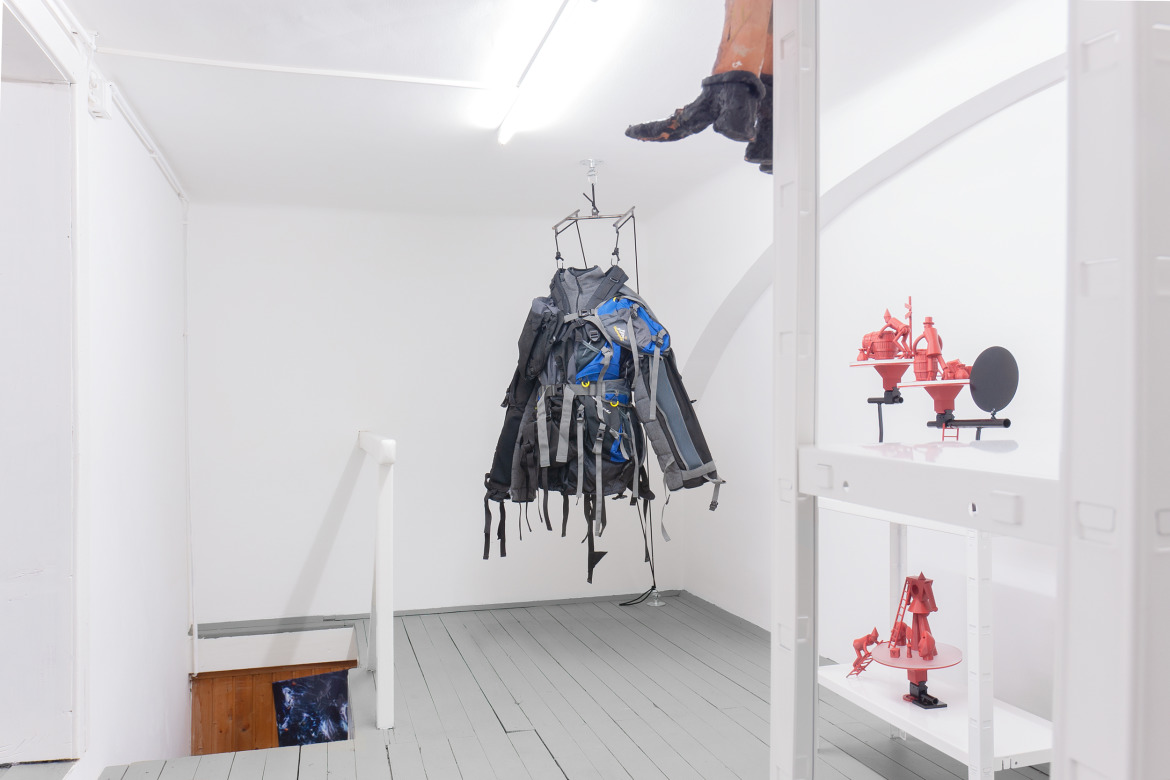
Halfway House, 2019, Installation view, EXILE
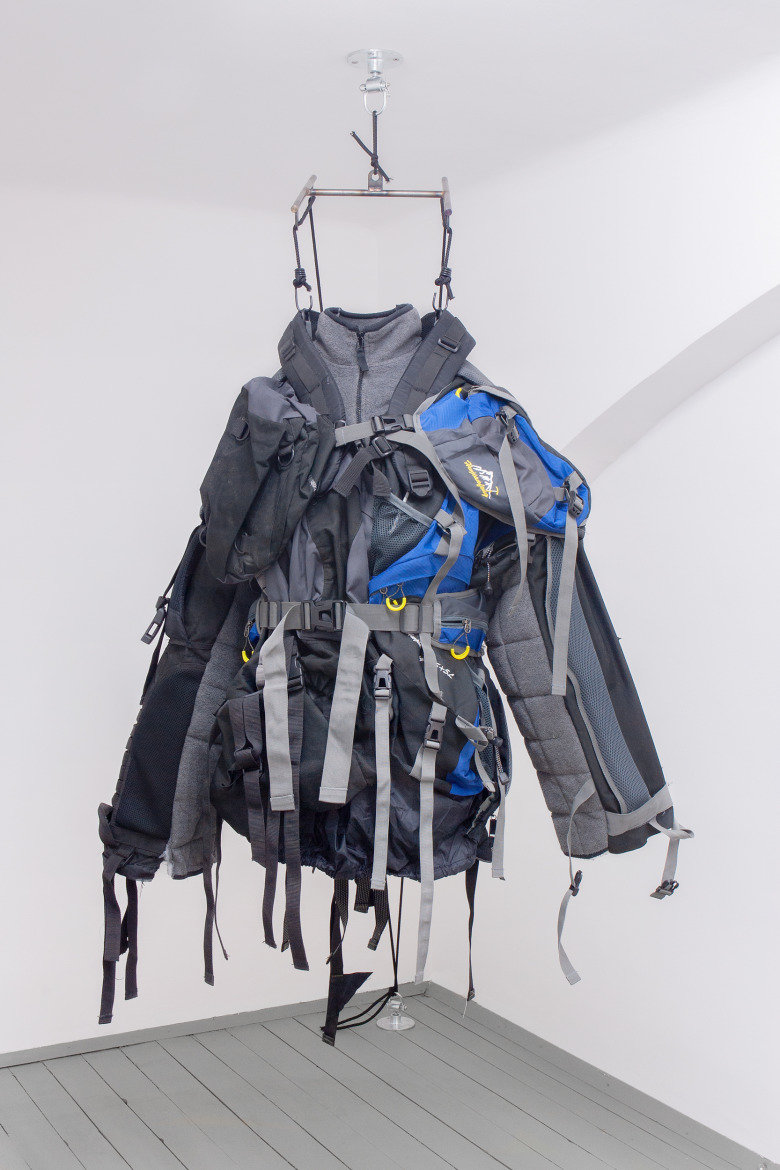
Tenant of Culture, Works and Days (series), 2019,
recycled backpacks, thread, welded steel, bungee cord, mannequin torso, dimensions variable <br>
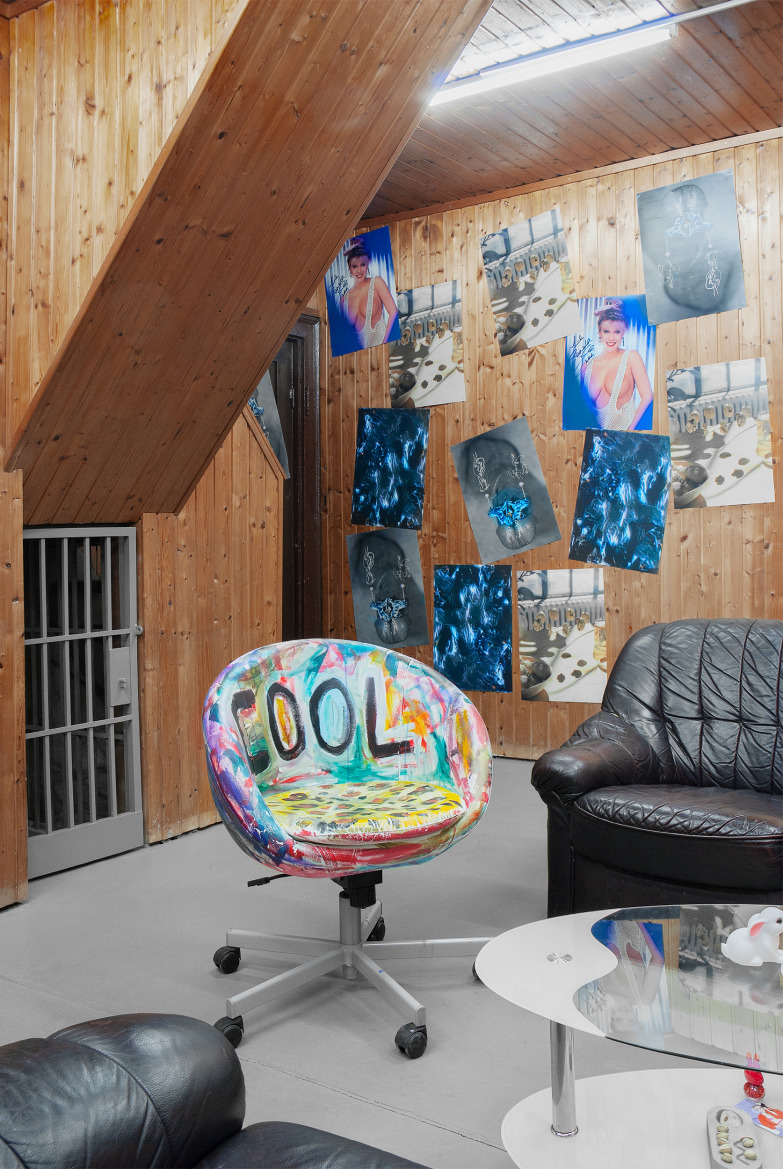
Halfway House, 2019, Installation view, EXILE <br>

Core Pan, HELIORARE, 2019, Poster, A2

Patrick Fabian Panetta, Samantha, 2019, Poster, A2
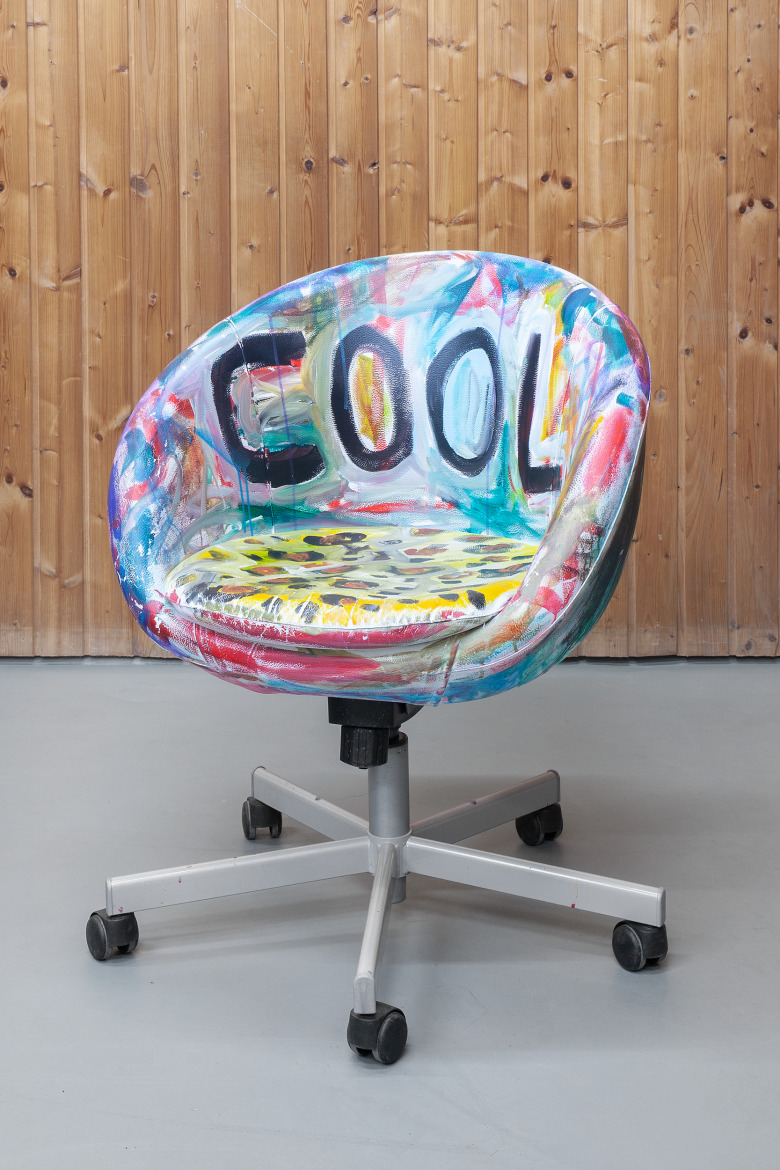
Kamilla Bischof, Untitled, 2018, acrylic on chair, 80 x 65 x 65 cm
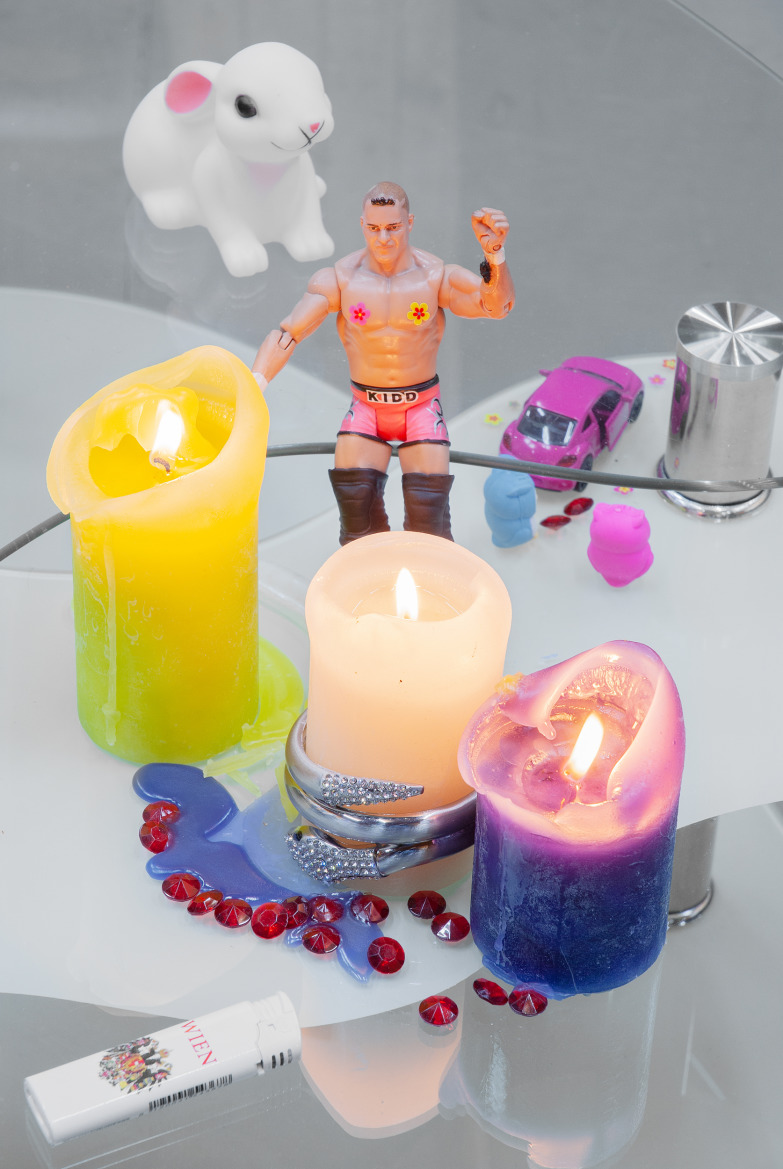
Halfway House, 2019, Installation view, EXILE
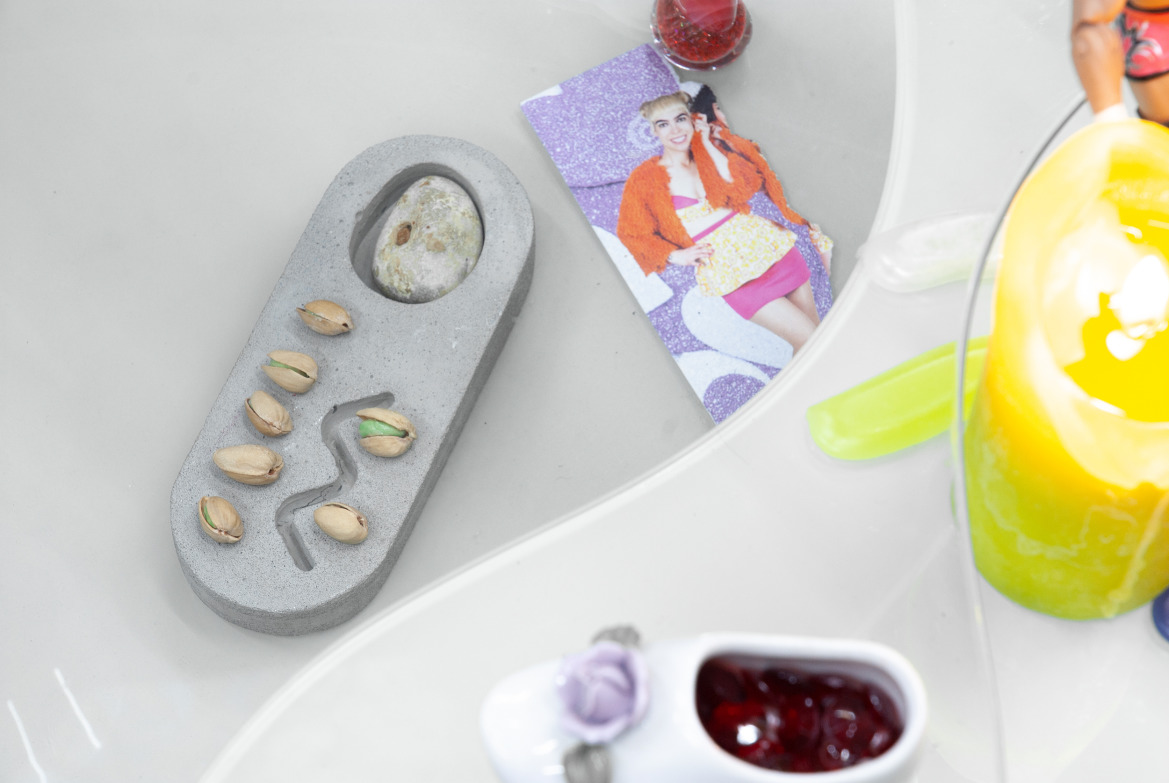
Rafal Zajko, Dehiscence, 2019, jesmonite , sea pebble, glazed ceramic , pistachio shells, 18 x 8 x 4 cm
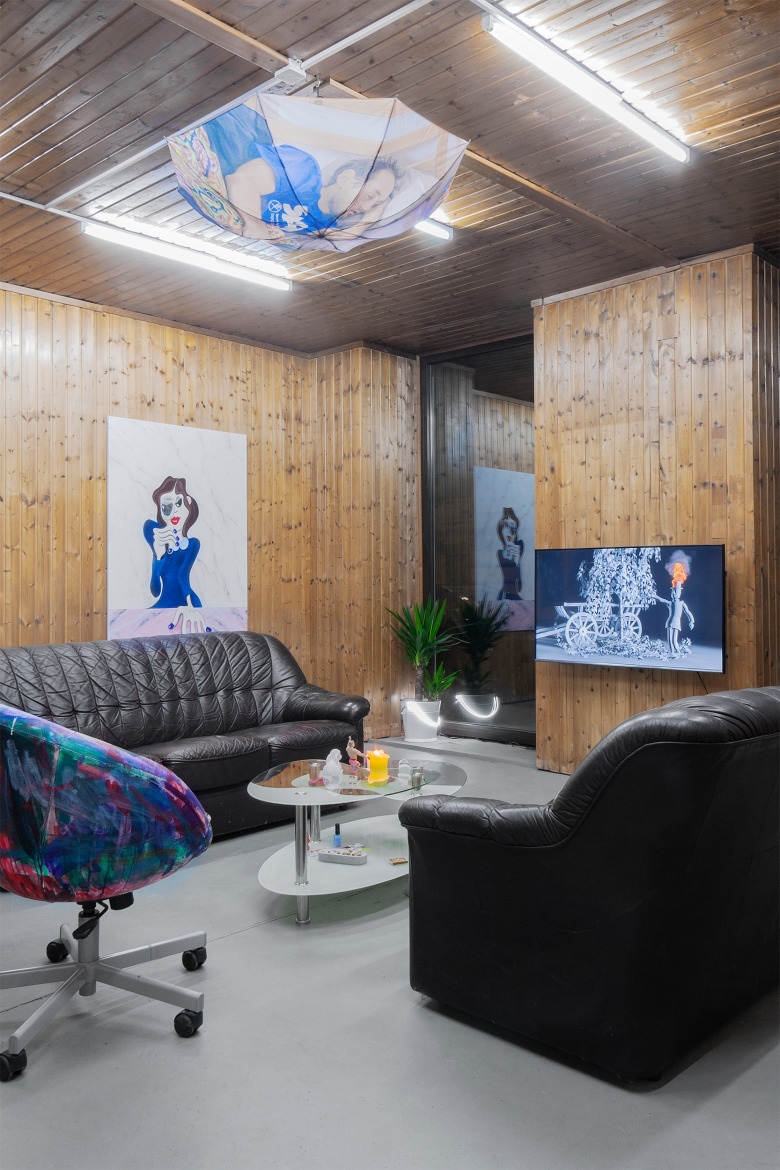
Halfway House, 2019, Installation view, EXILE
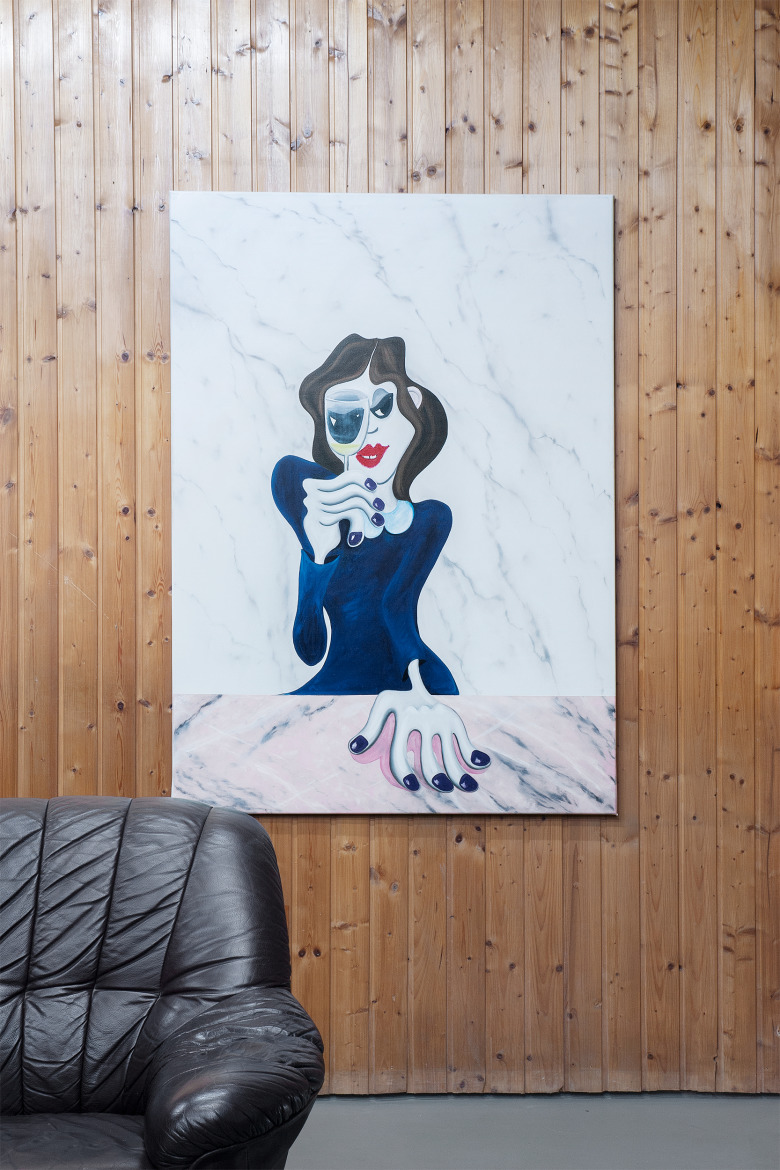
Tatiana Defraine, My eye!, My foot!, 2018, oil and oil stick on canvas, 140 x 100 cm
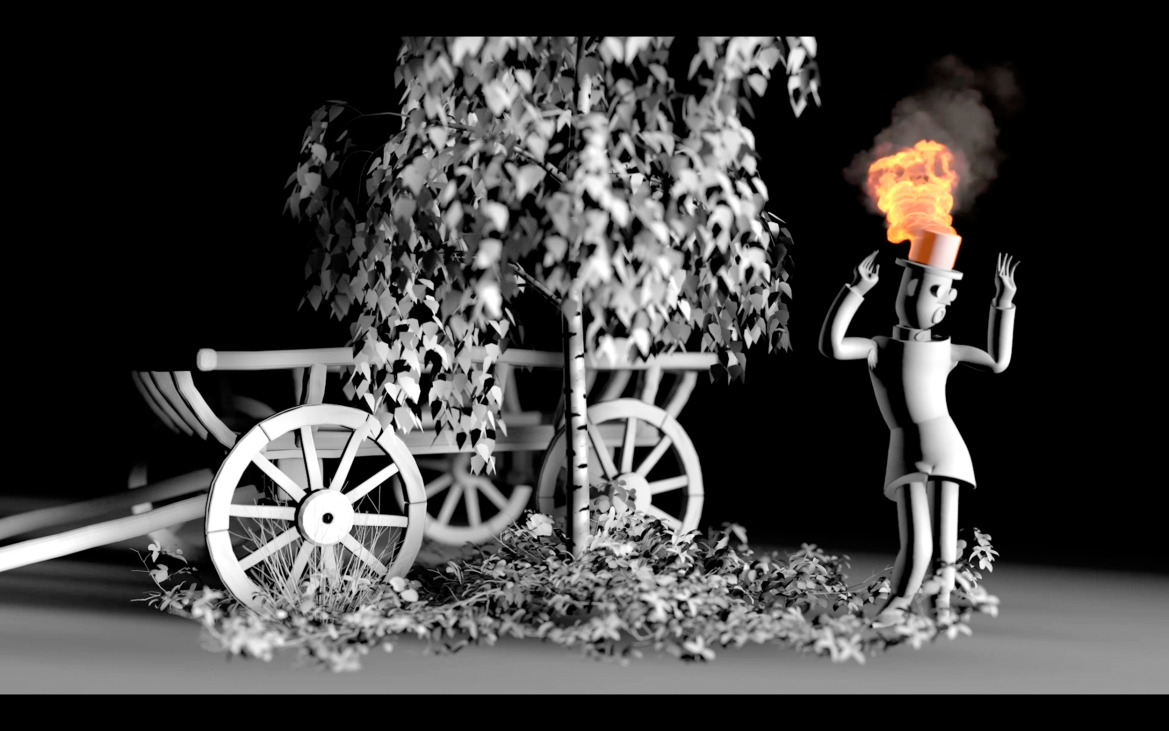
Wieland Schönfelder, Nebula Interna, 2018,
HD video, 12:42 min (loop)
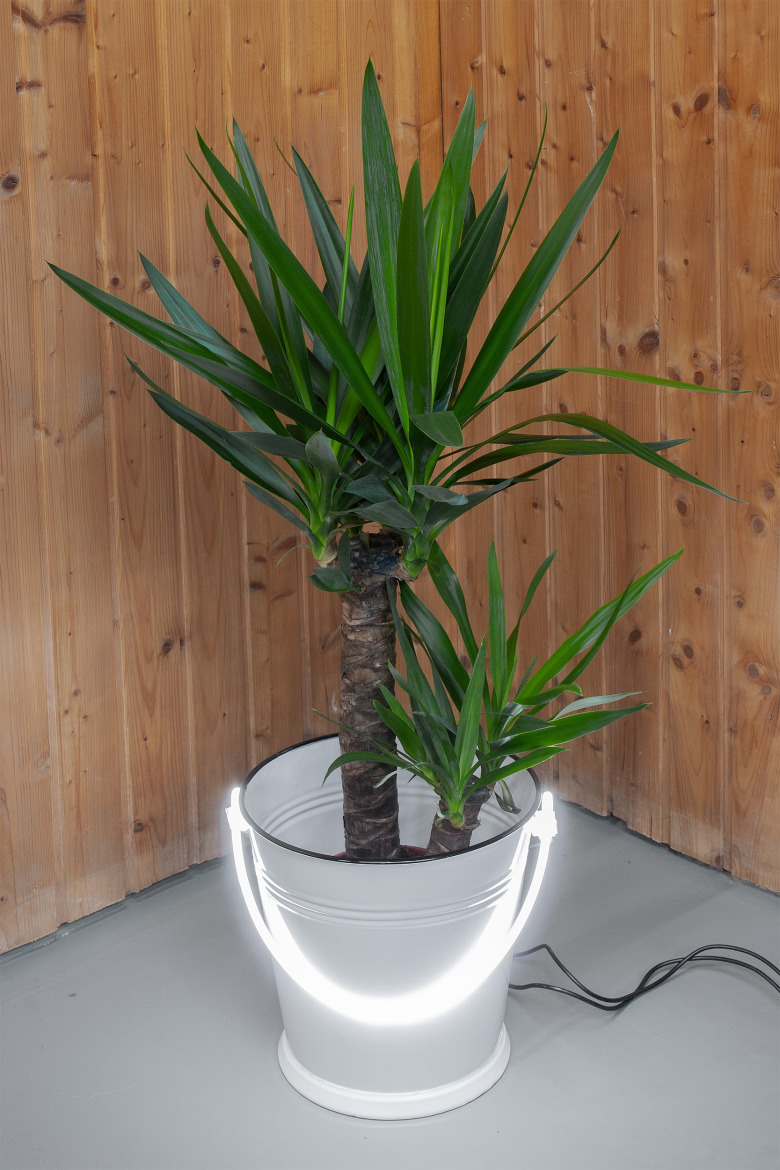
Vlad Nancǎ, Bucket II, 2013, enamel bucket, neon light, Yucca plant, dimensions variable <br>
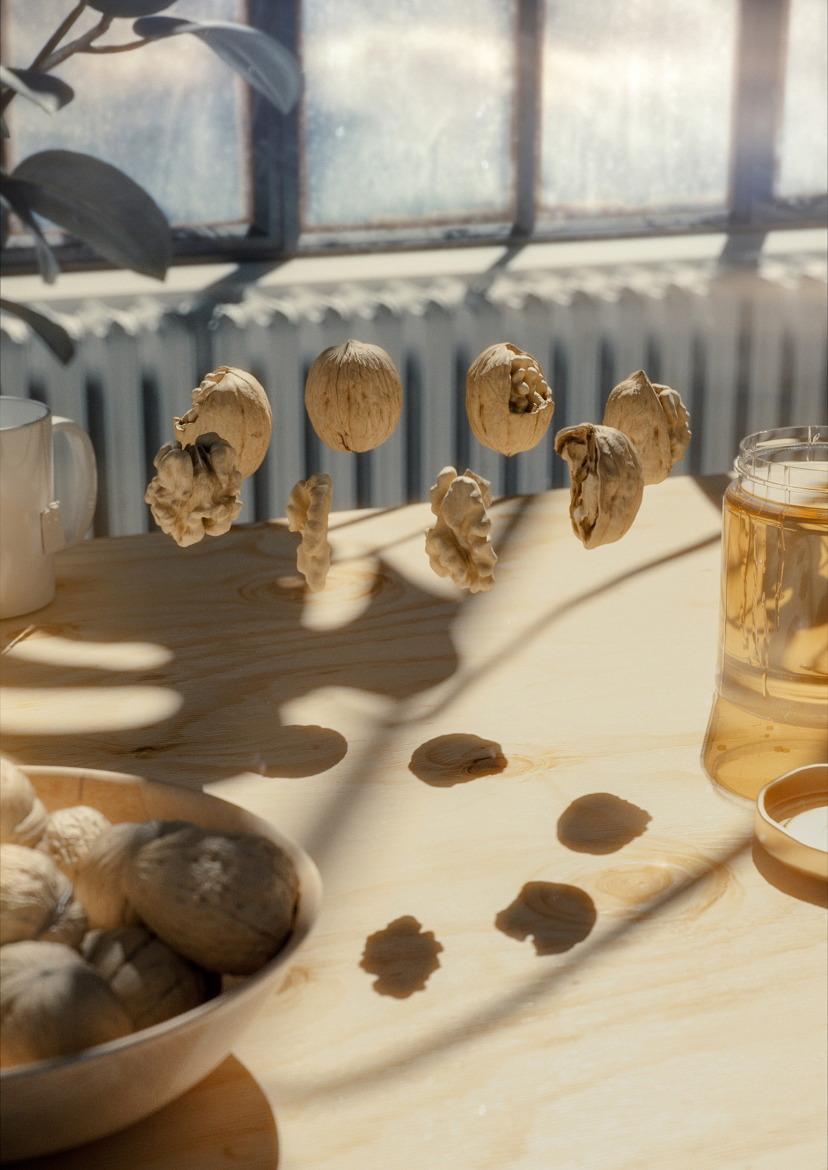
Malte Zander, Untitled, Poster, A2
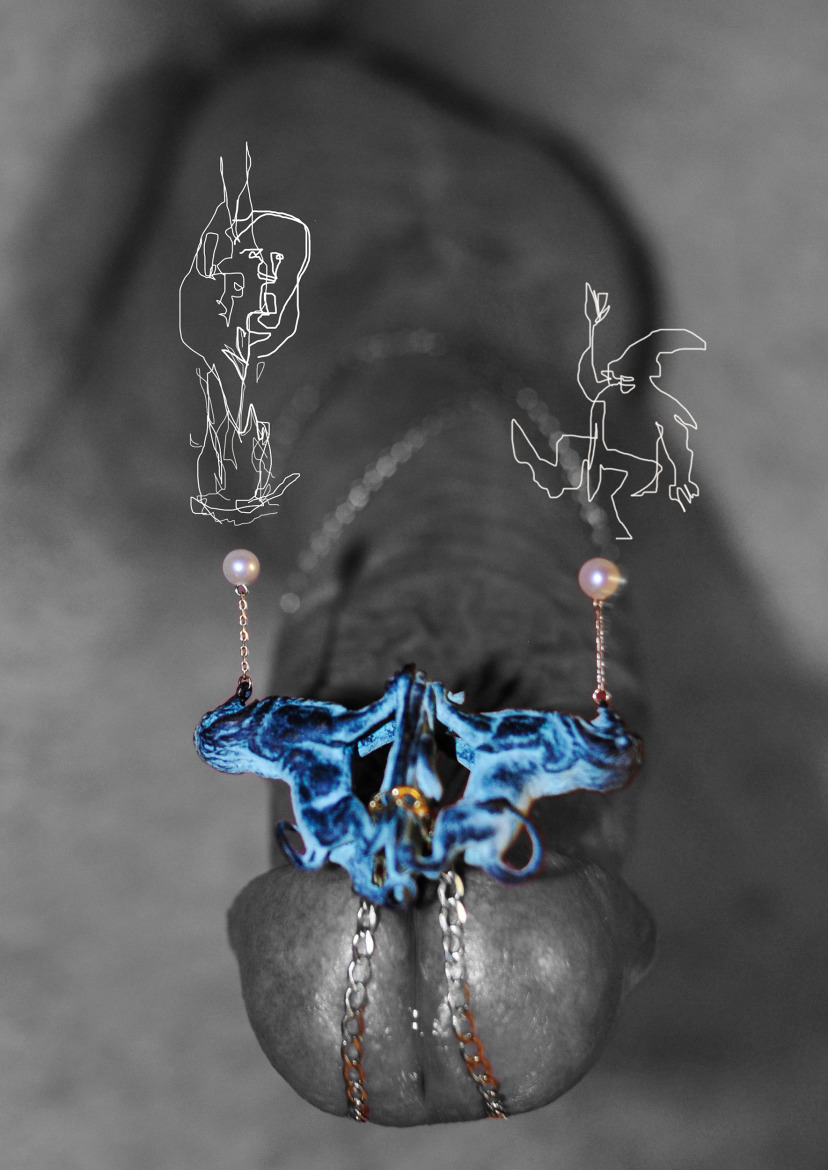
Raphaela Vogel & Johannes Büttner, Fluff the magic dragon, 2019, poster, A2
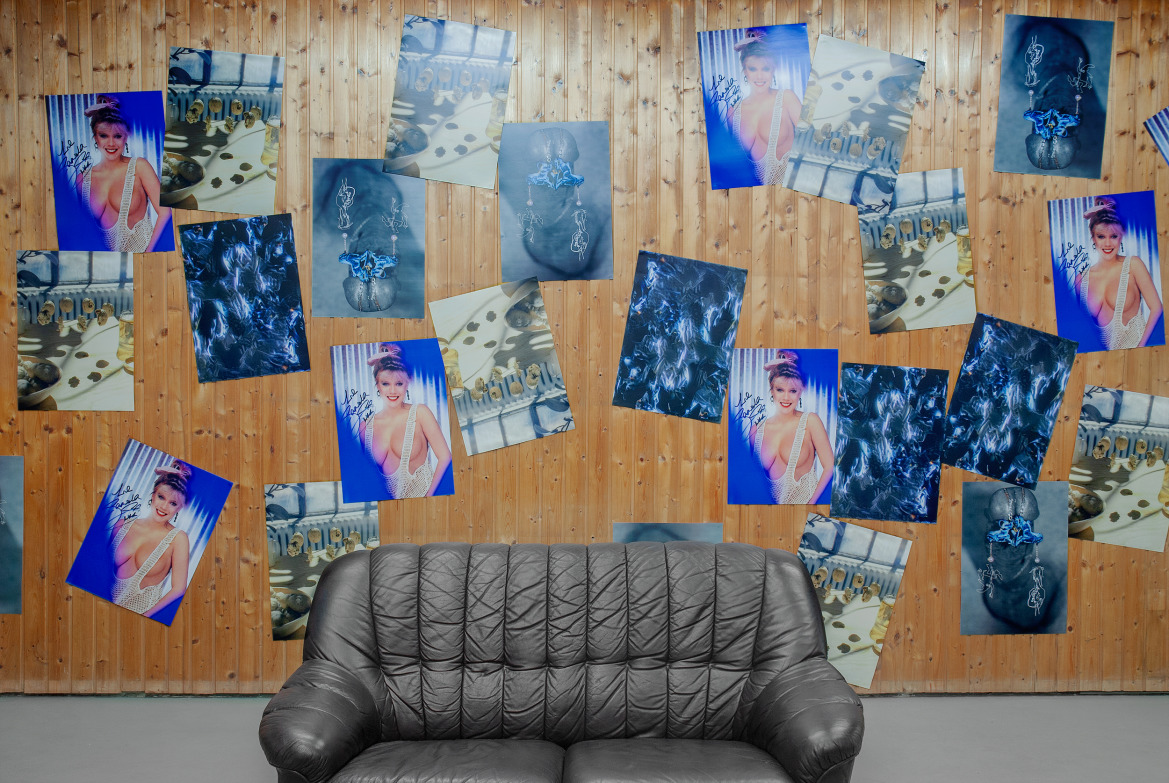
Halfway House, 2019, Installation view, EXILE
plain tables shabby furniture and dizzy swans sipping red winez
let’s have a crash course for car crashs and train wrecks gold tooth pick a boo
I have so much respect for social workers but capitalism bores me
I don’t even realize advertisements around me anymore and my boyfriend bought pistachio rice pudding What a disgrace. Unfollowed.
I love refrigerated food
I swear it’s just like a pill
can make you feel better can make you feel ill
My kitchen usually smells of burnt onions and weed
but today one of my room mates cooked fish and the smell makes me sick
I want a pair of designer shoes I also wanted to stop smoking
Maybe I’m going to snitch
My face is the front of shop
My face is the real shopfront
reminds me of the last time someone called me a copycat
honestly I don’t give a fuck
RIP Karl
I <3 YOU MOM
I <3 YOU HALFWAY HOUSE
$$$
I
In criminology, the purpose of a HALFWAY HOUSE is generally considered to be that of allowing people to begin the process of reintegration with society.
Between the recreation of capitalist concepts and treating economic and social necessities, this scenery positions itself as an experiment, shaped by duality.
Spatially separated with slight and divine intersections it looks closer into the overlapping of two aspects in nowadays art world: commerce & community
Multilaterally, the history as well as the coined function and capacity of EXILE, of independent art spaces in general, within their prevailing surroundings, are being addressed.
It should be clear that artworks hold a different responsibility than designed mass products.
Yet, sometimes we find undeniable similarities. The selling of originality and individualistic forms of expression can only be argued when we invade the integrity of the shown works and their authors. We are confronted with a spectrum of commercial co-existence here. Within such an environment each piece starts to blend in while still poetically claiming a title for its own. We’re facing products which through their purchasability can be resocialized. They want to exceed the display that was pushed upon them and create narratives on and for their own. These works are ultimately given a new place in society. But are there also seeds of thought planted with them? Is there space for further ideas to grow?
Without approval, visitors are turned into a performative element enjoying the voyeuristic gaze of outside passengers. Located in a ground level shop front, on the edge of the fancy first district, one finds an exhibited social situation. A similar setup awaits the spectators upstairs, where works are impatiently waiting similarly staged and performative but ready to be looked at.
Besides the more subtle artistic interventions on the ground floor such as the posters that were exclusively commissioned and which can be bought by visitors of every class, the room should further function as a place of exchange and communication. Somehow reminiscent of a youth center or a teenager’s coming of age home, it creates a pseudo-institutional and -intellectual setting for socializing without actually touching what is considered an exhibition space. Especially within commercial spaces, we need to reintroduce discourse and a sense of being there for each other. A lack of moral & financial sustainability within a hypercapitalist system is to be witnessed.
Emphasizing on the mixture of realities and expectations when entering a contemporary art context and the mixture of approaches within EXILE itself, HALFWAY HOUSE is an aim in blurring borders. It offers itself as a seceding act towards the frequently imagined purpose of a gallery space in times of turbo acceleration. Mixed up realms and professions demand a move of repurposing.
Despite solely viewing art as a product we were animated to reflect on how these objects continue to lead people inside a haziness amid the lucid areas of commerce & community. (Julius Pristauz)
II
Recently I was transported to a scene somewhere in the near future, shortly after the end of the first global nanoware and the partition of the world in ghettos controlled by postfacist microenhancement monopolists and retrofacist prepper paramilitaries. Society’s erosion had left only wasteland, sweeping away institutionalized cultural practices and their preceding markets. What was called “contemporary art” beforehand had collapsed to a form of trickster survival practice. This space I found myself in seemed to be a refuge, a non-site of precarious community without any fixed qualities besides shared desperation and some collective comfort found in pharmacological self-defense. ⠀
Confusion overwhelmed me, I felt strangely old and at the same time thrown into a hallucinatory teenage heterotopia. Did I reach the next level? Or was it all just a cynical joke? The futility of the question made me laugh. I decided that it wasn’t about the red or the blue pill but about the orange one that I found in a cupboard upstairs. The interregnum had fallen, “the old” had decomposed, the descendants of monsters had established their neofeudal reign. Now it was all about the right equipment. Deal with it, I told myself, and better get dressed accordingly. (Nada Schoer)
Works by Amanda Ross-Ho, Core Pan, Diana Barbosa Gil, Fette Sans, Johannes Büttner & Raphaela Vogel, Kamilla Bischof, Malte Zander, Martin Kohout, Nschotschi Haslinger, Patrick Fabian Panetta, Rafal Zajko, Tatiana Defraine, Tenant of Culture, Tilman Hornig & Paul Barsch, Vlad Nancă, Wieland Schönfelder.
Curated by Julius Pristauz.
FEATURES
→Artmirror
→Mousse Magazine





































































